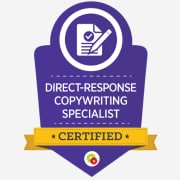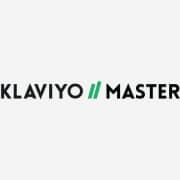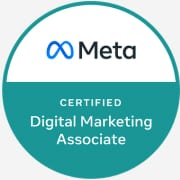Why 3-8 Ads in a Facebook Ad Set?
Running a social media marketing agency gives us the privilege of having direct communication with ‘Marketing Specialists’ who work at Facebook. One common piece of advice they have shared is to have 3-8 ads live in an ad set, and there’s more than one reason this is best practice.
Invest in a Split-Test
The first reason it’s a good idea to create 3-8 ads is that you will be split-testing (comparing combinations of ads against each other).
This is a luxury for marketers that has never been so easy.
With a few clicks of a button, we can duplicate an ad, change a variable, and publish the changes. It won’t be long before the data comes flowing in and we can monitor performance until we find a winner or winning combination.
Split-testing, or A/B testing, should never be done just for the sake of it, so consider these three rules when you hit that ‘duplicate’ button in your Ads Manager:
- Change One Variable
Initially, you should be creating ads that are as different as possible, and that may mean changing multiple variables at once, however, when you get to the stage of wanting to do some serious optimisation on some high-performing ads, you should be changing only one variable at a time so you know with certainty which variable is impacting the performance of your ads.
The variables you can change in a Facebook ad are the:
- Format: Image, Video, Carousel, Collection etc
- Instant Experience
- Primary Text (body text)
- Headline
- Link Description
- Destination: Landing page etc
- Display link
- Call-to-action Button: Learn More, Shop Now, etc
- Languages
If you change more than one of these variables in an ad, you won’t know which variable is impacting performance. Here’s an example of what NOT to do when you get to the pointy end of optimising your ads:
- Ad 1: Headline A, Image A
- Ad 2: Headline B, Image B
- Ad 3: Headline C, Image C
Here’s an example of what you SHOULD do:
- Ad 1: Headline A, Image A
- Ad 2: Headline B, Image A
- Ad 3: Headline C, Image A
- Create ads that are as unique as possible.
As I touched on above, it’s important to create ads that are as unique as possible, especially at the start of any campaign launch.
Then, as you start to correlate data on the variables that have a positive impact on performance, you can start optimising the campaigns by changing one variable at a time.
A helpful way to create four very unique ads is by creating a simple two-by-two ‘scenario matrix’, with the left quadrants representing short-term and the right two quadrants representing long-term. The top two quadrants will represent positive situations after using your solutions and the bottom two represent negative situations they find themselves in before using your solution.
You should end up with this:
<td”>Short-term, positive situations after using your solution
| Long-term positive situations after using your solution | |
| Short-term, negative situations before using your solution | Long-term, negative situations before using your solution |
Now brainstorm a list of situations in each quadrant that your customer experiences and split-test those that you believe are the most persuasive.
- Be Strategic
Don’t split-test for split-testing’s sake.
Every client we work with goes through an initial process where we research competitors, conduct a website audit, review existing creative assets, lead a strategy workshop and develop their strategy. This gives us a thorough understanding of the market, the product/service, and how to join the dots between them. It’s also our reference point when we need to strategically craft ads the will engage people emotionally.
When you’re in the process of creating your ads, don’t do it off a whim, create or refer back to your marketing strategy.
The Facebook Ad Algorithm
There are many factors that influence Facebook’s ad algorithm, including the campaigns and audiences you select, and how engaging your ad is.
An underlying rule of thumb is that Facebook will prioritise “meaningful interactions”.
In other words, Facebook wants to create a good user experience, just like Google does with its ads. If you create ads that almost no one is clicking on (low click-through rate), you can be sure you’re going to pay for it… literally.
Another key consideration is that the ad algorithm is basically one big auction; when you advertise on Facebook, you are bidding against other advertisers, so another huge influence on how much you’re going to pay is how competitive the audience is you’re targeting.
For example, we know that if you target the demographic ‘Parents (All)’, you can expect to pay a high CPM and CPC because it’s highly competitive.
Although there are different ways to bid, and many different ways you can influence the ad algorithm, one simple and effective strategy is to have between 3 and 8 ads in your ad set.
Any less than 3 and you’re not giving the ad set enough ads to test, serve, and rotate, any more than 8 live at one time and you’re giving the algorithm too many options.
Again, this is advice from multiple Facebook Marketing Specialists that we have accessed at Facebook over the years, so it’s coming straight from the source and from my own personal experience of running Facebook ads in my agency for more than 8 years.
The Facebook Ads Library
If you’re a bit stuck for inspiration and are struggling to come up with 3-8 unique ads, I’d highly recommend you check out the Facebook Ads Library.
This is Facebook’s own tool to provide “transparency by offering a comprehensive, searchable collection of all ads currently running from across Facebook apps and services, including Instagram.”
Type in the name of some of your favourite brands and see what ads they are producing.
Also, see what the leaders of your industry are doing internationally.
Another great website for inspiration is UnicornAds.com. This helpful website lets you “Spy the top 1% of E-commerce ads”.
Add Ads to your Ad Set!
I can’t believe that subtitle makes sense ????
But seriously, that is exactly what you should go and do right now.
Start by creating the situation matrix… really get into the mind and heart of your audience (empathy is key).
Then produce some copywriting and use visual assets that speak to each of the four quadrants.
Pick your favourite combinations, chuck them into your ad set, and let the algorithm do its thing for at least a few days, or until you have statistically significant data to make a decision about what you optimise next.
If you’d like to learn more about the strategies we build for our clients or simply don’t have the resources to be creating, optimising and reporting on ads, simply click here to book a quick 15-minute chat to learn how we can help.






